I started wearing a weighted vest on my daily walks - here's how it changed my fitness for the better
Wearing a weighted vest for walking can help boost fitness and strength, and aid weight loss. Health Writer Kat Storr wore one to find the benefits in two weeks

Scrolling through social media, you've probably seen endless posts of women using a weighted best for walking to complement (or replace) traditional strength workouts. This low-impact and low-commitment exercise is taking off for all the right reasons. Here, Health Writer Kat Storr explores the benefits she found after two weeks of wearing one.
Walking is part of my daily life - I get 10,000 steps in without leaving the house just by chasing after my children and doing chores. However, aside from holiday hikes up a hill for a good view (or pub) in my walking shoes, I rarely walk for exercise alone. I find strength training for women, along with running and swimming, much more satisfying.
In getting older though, I’ve realised my mental health would benefit from some restorative walks and time away from my desk during the day. I live in an area with a lot of green space and need to take greater advantage of it.
Being limited on time, my walks would have to replace one of my workouts a few times a week so they had to be worth it and help to maintain my strength and muscle tone, just as the workouts I'd be missing would. I chose the weighted vest after weighing up weighted vests vs ankle weights. Then, I took on the challenge of walking 30 minutes a day at most with one for two weeks - here's what happened.
What is a weighted vest?
A weighted vest looks much like a running vest or short gilet. It's designed to wrap around your back and chest with clasps at the front and it contains weights or small sandbags, ranging from 5kg to 30kg, which add extra resistance to your movements.
This extra resistance on top of your body weight adds another intensity level to any walk or other exercise, forcing you to work harder to complete the same movement. They are also used in a weighted vest workout. For those who want to improve their aerobic fitness, boost strength, lose weight, or perform better in a certain sport, one of the best weighted vests for women can be a useful accessory.
Shop weighted vests
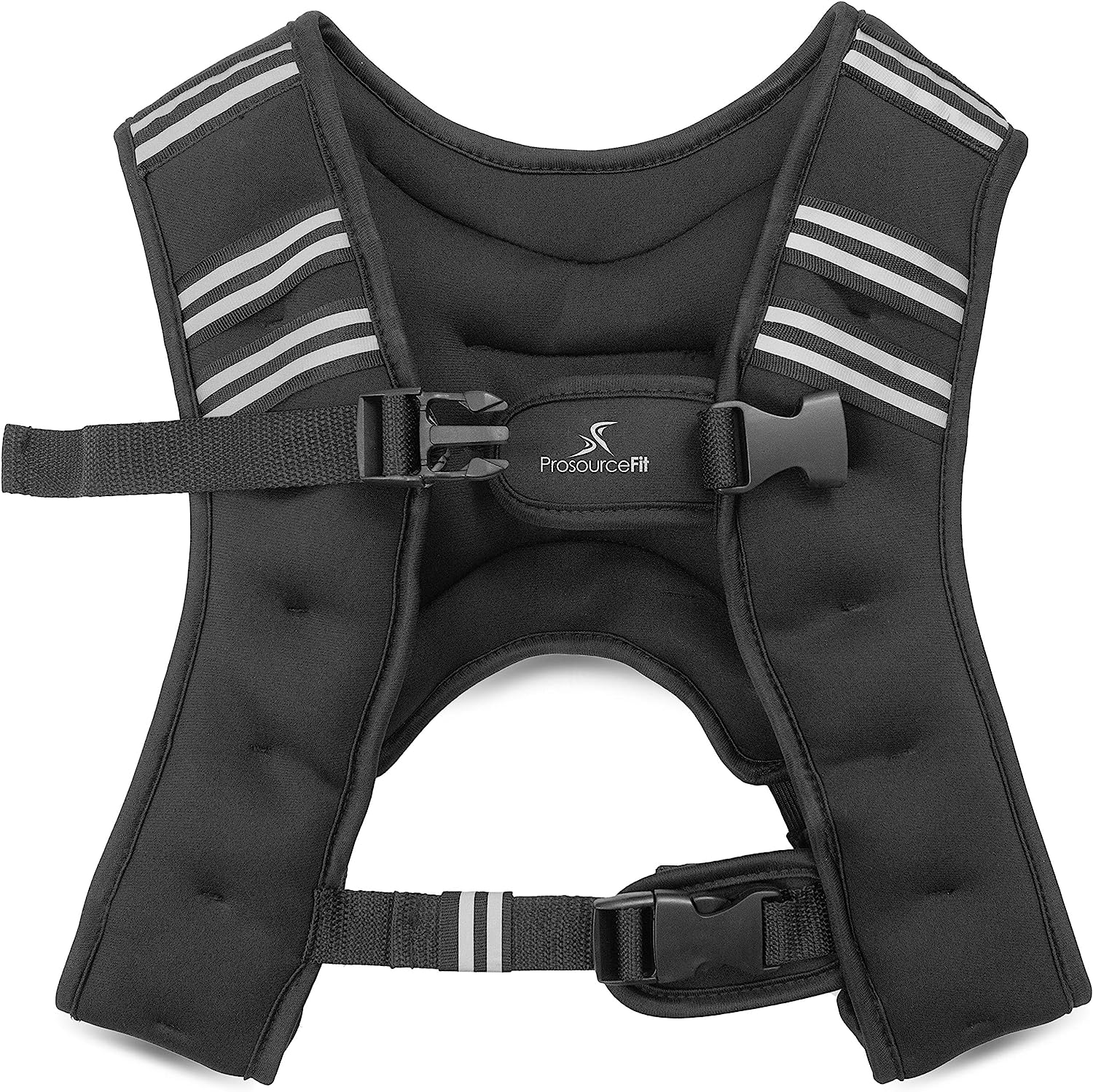
This was the weighted vest for walking that I tried. I thought it was an excellent choice as a beginner. The adjustable straps make for a snug fit, without rubbing, and the pocket on the back is handy to store keys and other essentials.
However, a vest with weight bags that can be added or taken out might have been better as it would have meant I could have started a bit lighter and built up gradually - but I think the 6kg weight was the right challenge for me.
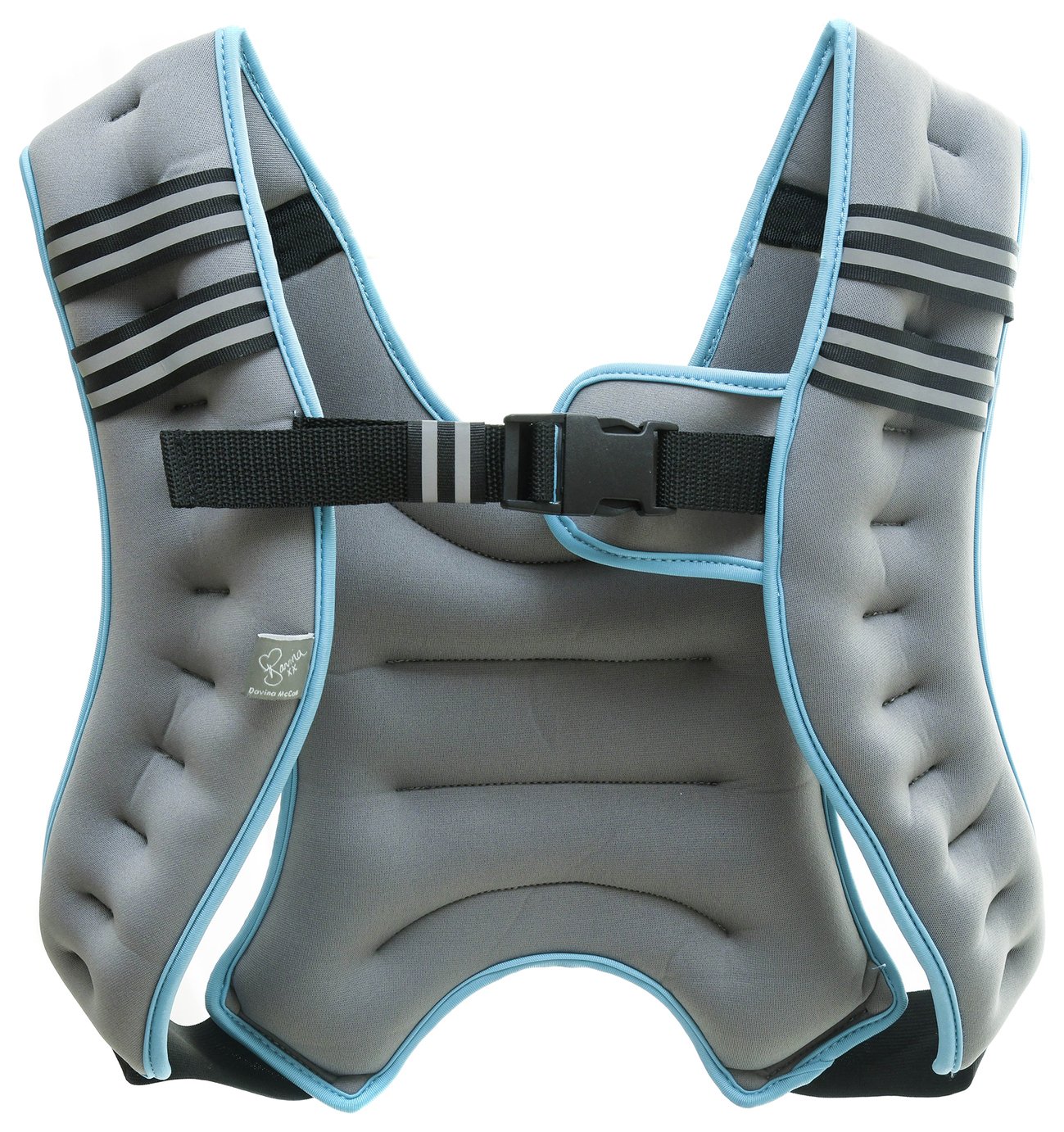
For under £30, this is another excellent option for beginners looking to start wearing a weighted vest for walking. This Davina McCall-approved vest is lighter than the one I tried at 3kg and made of neoprene, which may be more comfortable than the one I tried - but the weights aren't removable for an adjustable fit.
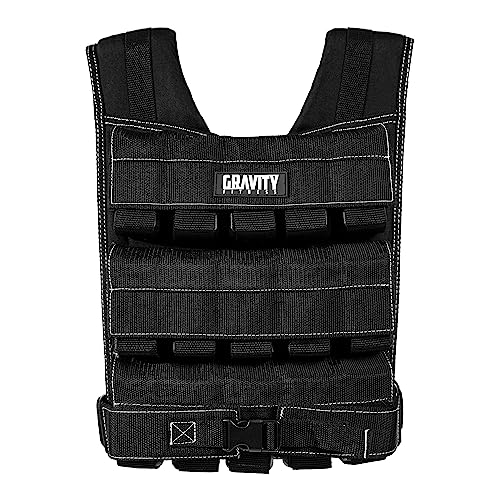
Though this weighted vest from Amazon is more expensive than others, it goes up to an impressive 30kg and is completely adjustable - so you'd only have to buy one as a beginner and work your way up the weights as you got stronger. It's also available in 10kg and 20kg designs with fewer pockets.
Benefits of a weighted vest for walking
1. Build strength and endurance
Looking for a way to boost your upper body strength without having to learn how to do a press up properly? Or lower body strength without learning how to do a squat correctly with a barbell at the gym? This could be the answer.
Sign up for the woman&home newsletter
Sign up to our free daily email for the latest royal and entertainment news, interesting opinion, expert advice on styling and beauty trends, and no-nonsense guides to the health and wellness questions you want answered.
On my first wear, I was surprised about how heavy the vest felt. Given I carry my children around all the time and do strength training at home twice a week, I thought a 6kg vest wouldn't feel that heavy. I was wrong. It felt really uncomfortable when I first put it on over my leopard print activewear, and this was an unnatural feeling for me.
I found the pressure on my chest and back quite hard to get used to and even slightly claustrophobic. I definitely felt a lot more breathless when walking up the stairs in it during my first session. I could feel that my body was working harder.
A weighted vest for walking felt very different from walking with a heavy backpack (also known as 'rucking'), which I’m much more used to when on walks or hikes. In the first days, I had to really focus on my posture to make sure that my shoulders weren’t rounded to compensate and I found myself engaging my core more than I normally would to stay upright.
2. It's easy to include in your day
I realised I wouldn’t be immediately heading for a long early morning walk in my vest once I put it on. Being so heavy, I didn't want to set out on a walk only to not be able to make it home. So, I decided to wear it around the house for the first few days.
Over the two weeks, I wore my weighted vest while doing household activities like washing up, tidying and just walking around the garden and up and down the stairs. Even doing this raised my heart rate and left me slightly sweaty.
When it came to wearing the weighted vest on an actual walk and a spot of walking yoga, I decided not to go too far from my house. The idea of having to take it off and carry it home was not an appealing one, so I started with distances and times I knew I’d be able to do. A 15-minute walk around the block, upping it by 5 minutes every other day seemed like a good place to start.
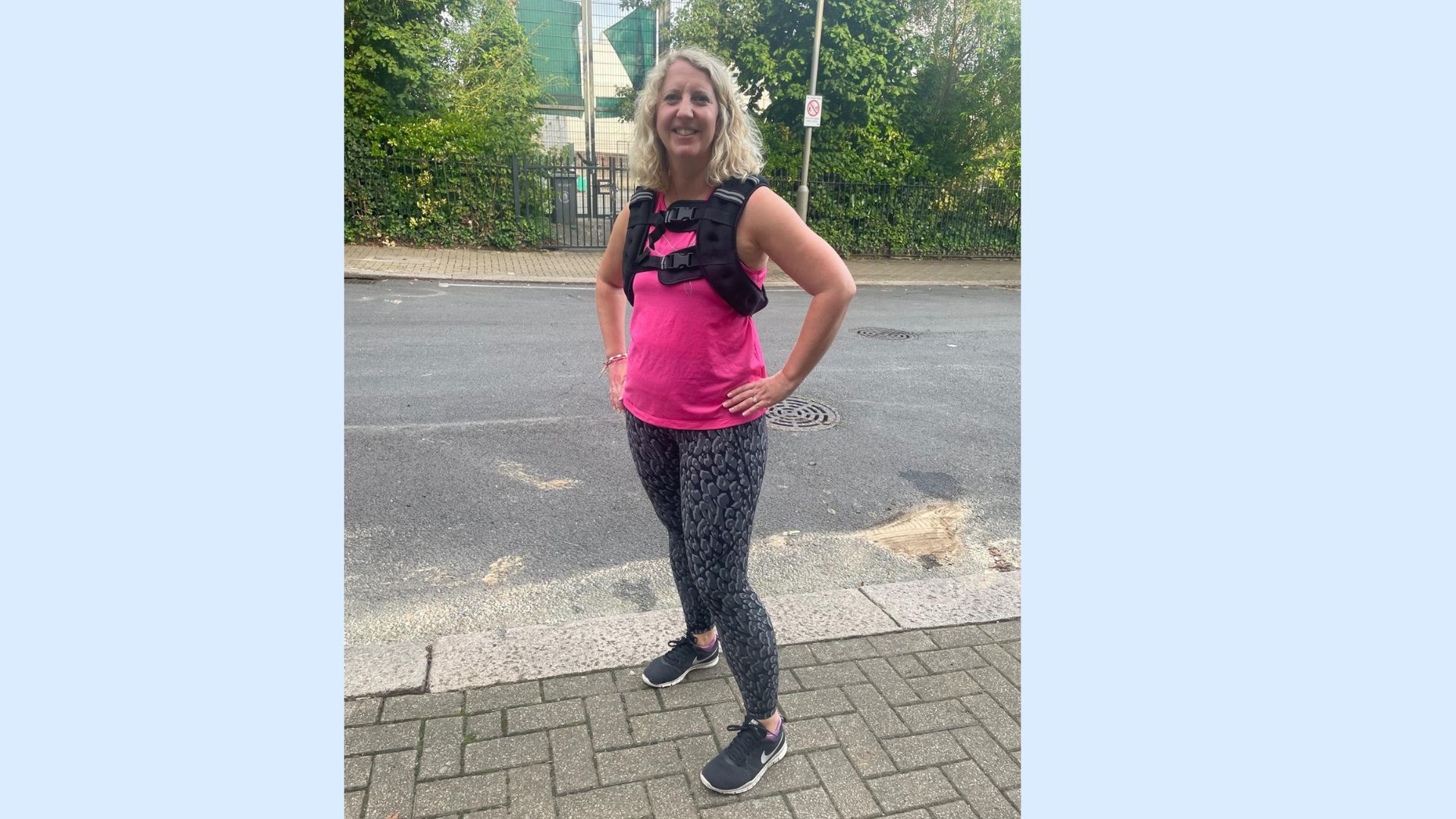
I wore my weighted vest on several walks around my local area after wearing it around the house for a few days.
3. It's a full body workout
When I first started wearing the vest, I was so focused on how it felt on my upper body that I forgot my legs and glutes would also be in for a workout. When I increased the length of my walks to 15 to 20 minutes every day, I started to feel the burn in my quads and calves. This is why a weighted vest is such a good form of strength training for runners, hikers, and all those who do cardio exercise.
I found the pressure on my shoulders felt quite intense if my arms were hanging down by my sides, so I held onto the vest to support myself and to make sure I was standing up straight. Once I got into my stride and after the first few short walks, it felt easier.
Wearing a weighted vest for walking is a full-body workout - don't let anyone tell you otherwise. I had to listen to music or podcasts to distract myself from the weight around my chest initially - but after a short while, it became more enjoyable. I even started to feel smug when walking amongst ‘normal’ walkers who weren’t wearing a vest - apart from the day it rained and I couldn’t run home as it was too heavy...
4. Suitable for all
I’m hypermobile - my right shoulder can dislocate quite easily during regular strength training, so I did make sure I was extra cautious when putting the vest on and taking it off, but otherwise, I didn't have to worry about this when I was wearing the vest. Normally, I have to be very careful when using dumbbells and kettlebells.
It was easy to put it on for a quick 20-minute walk around my local area or to the park and would leave me feeling physically tired after, making it a time efficient exercise.
Also, had I opted for an adjustable weighted vest for walking, I could have removed some of the weights and started at an easier level before working my way up to 5kg and beyond. If you're totally new to strength training or weighted workouts, I'd recommend doing this to get fitter.
5. Improve bone density in perimenopause
A weighted vest may be particularly excellent for women approaching or going through perimenopause where muscle and bone density naturally declines. "Carrying weight on your body improves bone density and stimulates bone growth due to the increased load, which is important for preventing osteoporosis,” says personal trainer Anya Russell.
According to the Royal Osteoporosis Society, 50% of women over the age of 50 will break a bone largely due to osteoporosis during their lifetime, which is why exercising to increase bone strength is so important.
Dr Mary Claire Haver, a menopause specialist and bestselling author with over 2 million Instagram followers, is also a fan of the weighted vest for gym and treadmill workouts. "These are great for osteoporosis prevention and for strength and for muscle building," she says in an Instagram reel. "I'm always wearing one of these when I walk on the treadmill."
A post shared by Mary Claire Haver, MD, author The New Menopause (@drmaryclaire)
A photo posted by on
6. A weighted vest can help you lose weight
If weight loss is your goal, wearing a weighted vest while walking or working out is an excellent idea as it's deemed "safe" and "feasible" by the experts and leads to greater calorie burn, per studies by the University of Gothenburg and Wake Forest School of Medicine. Working harder raises the heart rate and forces your body to burn more energy (calories) to fuel and complete the same activities. The more calories you burn, the more likely you are to be in a calorie deficit for weight loss.
Benefits extend well beyond just the 20 or 30-minute walk you do too. “A 10-minute brisk walk with a weighted vest will be an incredible leg workout and you'll feel it even after you've taken the vest off," says personal trainer and fat loss expert Andrew Hill. "Whilst muscles repair, energy expenditure is increased as more resources are pumped to worked muscles, in other words, your metabolism stays elevated even after you've stopped exercising." This essentially means you'll still be burning calories while sitting down, having breakfast, and getting on with the rest of your day - sans weighted vest.
"Strength-based exercises are well documented to be the most effective for maintaining a high metabolism, which is essential for fat loss, whilst consuming an increased protein diet," he says.
How much should a weighted vest weigh?
It's recommended that you don’t wear more than 4 to 10% of your body weight in a weighted vest but if you're like me and you've never worn one before, it's best to start on the lighter end. I chose a 6kg (12lbs) vest as I’m petite and not particularly strong.
"What starts feeling like a light weight soon becomes heavy after just a few minutes and it can be quite a shock," warns PT and nutrition expert Scott Harrison. "Begin light and gradually increase it to avoid injury and early exercise burnout. You must make sure the vest fits well to prevent discomfort and negatively affect your balance and posture. On that note always remember with any exercise, you must maintain proper form and keep your back in alignment to avoid strain or injury."
Stop wearing it completely if you feel any sharp or consistent pain, especially in joints like the knees and hips.
How long should you wear a weighted vest for?
If you’re new to wearing a weighted vest, you should only wear it for a short time to avoid muscle strain or causing yourself pain. Hill says: “We're all different. If the weighted vest starts to cause any feeling of pain or increasing discomfort, take a break."
Try wearing the weighted vest around the house to begin with as a form of exercise snacking, so you can get a good idea of how it feels to wear it. You can also take it off and carry on with your day, without having to navigate getting home with the additional weight.
After this, try taking your weighted vest out of the house for 10 to 15 minutes at a time - and be sure to stay close to home. "It isn't fun when you wear it until fatigue and then you have to carry it for a further 30 minutes before you can put it away,” he says.
How to choose a weighted vest
- Weight: This is most important. Everybody is different so it's important to choose a weight that's right for you and avoid making too big of a jump too quickly. If you get an adjustable vest, start with 4 to 5% of your body weight and add weights as you get stronger.
- Build: Some come with sandbags which can be added as you get stronger and more comfortable wearing it. Most will have adjustable straps so you can evenly distribute the weight on your front and back. I'd suggest choosing one with weights on your front and back so the load is evenly distributed.
- Design: When it comes to appearances, not all weighted vests are made equal. Some look like bullet-proof jumpers that'll have people looking at you weirdly, while others look like basic running vests that appear nothing out of the ordinary when paired with your pick of workout leggings or running shorts. It's important to look at the design carefully before buying and consider where you'll be wearing your vest - will you feel comfortable wearing it in public?
- Washing: Most vests can’t be machine washed - but you can hand wash them with a damp cloth, leave them to dry, and treat them with anti-odour spray if they get sweaty. Vests with removable weights may be machine washable - but always check the label.

Kat Storr has been a digital journalist for over 15 years after starting her career at Sky News, where she covered everything from world events to royal babies and celebrity deaths. After going freelance eight years ago, she now focuses on women's health and fitness content, writing across a range of UK publications.
From perimenopause to the latest fitness trends, Kat loves researching and writing about it all. She's happy to give any fitness challenge a go and speaks to experts about wellbeing issues affecting people every day.
-
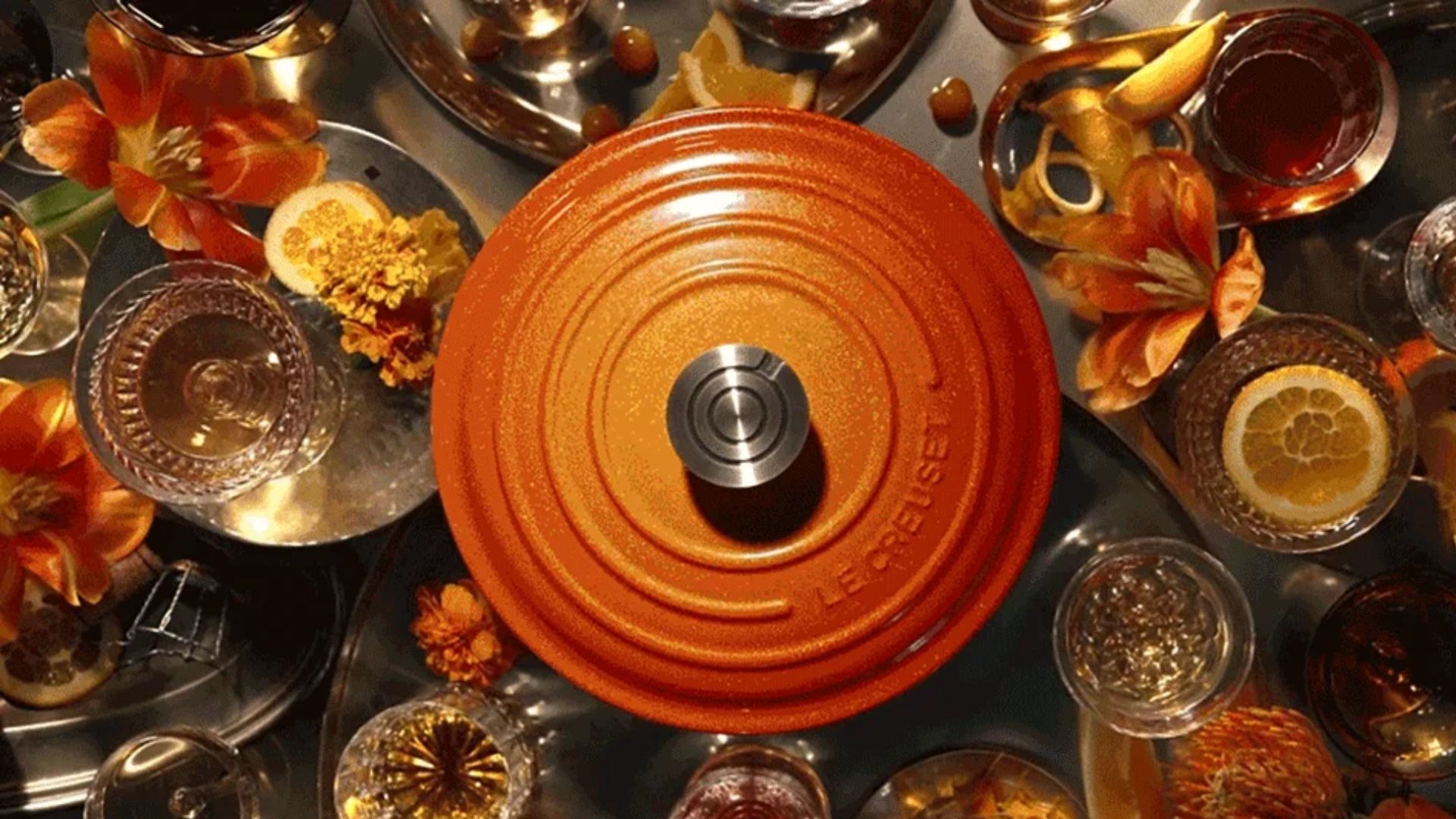 Le Creuset has taken the gold standard literally — their 100 year launch features real gold and an iconic designer collaboration
Le Creuset has taken the gold standard literally — their 100 year launch features real gold and an iconic designer collaborationLe Creuset have turned 100 years old and to celebrate they have launched a new colour — Flamme Dorée — as well as a coffee table book with designers Assouline
By Laura Honey Published
-
 This chic, Brazillian perfume brand is our beauty team's secret to smelling expensive and unique
This chic, Brazillian perfume brand is our beauty team's secret to smelling expensive and uniqueFrom salty accords to modern twists on tuberose, there's a Granado perfume for every preference - but these 9 blends have our heart...
By Naomi Jamieson Published